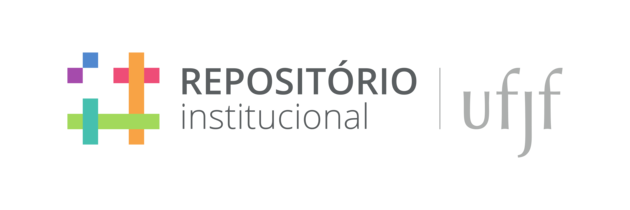https://repositorio.ufjf.br/jspui/handle/ufjf/2806| Arquivo | Descrição | Tamanho | Formato | |
|---|---|---|---|---|
| carolinapeixotobarros.pdf | 1.52 MB | Adobe PDF |  Visualizar/Abrir |
| Tipo: | Dissertação |
| Título: | O uso de discurso reportado por reclamados e reclamantes em audiências de conciliação do PROCON |
| Autor(es): | Barros, Carolina Peixoto |
| Primeiro Orientador: | Silveira, Sonia Bittencourt |
| Membro da banca: | Vieira, Amitza Torres |
| Membro da banca: | Rocha, Luiz Fernando Matos |
| Resumo: | O objetivo deste estudo é contribuir para o preenchimento da lacuna que existe nos estudos linguísticos no Brasil a respeito de discurso reportado, uma vez que há poucas pesquisas com dados reais de fala, principalmente no contexto institucional, em particular nas situações de conflito. Para tanto, encontramos suporte teórico em uma perspectiva interacional em Linguística (GUMPERZ, 1999; COUPER-KUHLEN; SELTING, 2001; SILVEIRA, 2008) para investigar o uso do discurso reportado pelas partes – reclamados e reclamantes – de audiências de conciliação do PROCON (Procuradoria de Proteção e Defesa do Consumidor) de uma cidade mineira. Procuramos focalizar a identificação da função argumentativa, as estratégias de trabalho de face e os footings assumidos pelos participantes no uso de discurso reportado como um tipo de demonstração (CLARK; GERRIG, 1990). O embasamento teórico para o estudo da função argumentativa está principalmente na pesquisa de Schiffrin (1987), para o de trabalho de face Penman (1990) e Silveira e Gago (2005) e para o de footings Goffman (1998). A pesquisa é de natureza qualitativa, tendo sido usados os seguintes instrumentos para geração dos dados: gravações em áudio e transcrição destas gravações. Em um primeiro momento, examinamos as principais funções argumentativas que o discurso reportado apresenta na fala dos participantes – reclamantes e reclamados – de uma audiência de conciliação do PROCON. Posteriormente, focalizamos na análise das estratégias de trabalho de face; no discurso reportado como um tipo de demonstração; e, por último, nos footings assumidos pelas partes ao produzirem o fenômeno estudado. Os resultados indicaram que reclamados e reclamantes usam o discurso reportado para apresentar e sustentar seus pontos de vista. As partes litigantes, ao produzirem discurso reportado usam estratégias de trabalho de face para proteger sua própria face e ameaçar a do outro. Os resultados sugeriram, ainda, que o discurso reportado em nosso contexto de pesquisa também é um tipo de demonstração, ou seja, é usado para encenar os contextos e ações reportadas. Finalmente, a análise nos mostrou que reclamados e reclamantes animam a própria voz e a de outrem, via discurso reportado, para sinalizar seu (des-)alinhamento à situação reportada. |
| Abstract: | This study has as objective contribute for the fill of the gap that exists in the linguistic studies in Brazil regarding reported speech, since there are just few researches involving real speech data, mainly in institutional contexts, especially in the conflict situations. For theoretical purposes, we found support in an interactional perspective in Linguistics (GUMPERZ, 1999; COUPER-KUHLEN; SELTING, 2001; SILVEIRA, 2008) to investigate the use of reported speech by the parts - complainants and complainers - in the conciliation hearing on the PROCON (Department for Consumer Protection and Defense) of a city from Minas Gerais. We tried to focus the identification of the argumentative function, the strategies of facework and the footings assumed by the participants in the use of reported speech as a demonstration type (CLARK; GERRIG, 1990). The theoretical basis for the study of the argumentative function is mainly in the research of Schiffrin (1987), for the one of facework Penman (1990) and Silveira and Gago (2005) and for the one of footings Goffman (1998). The research is of qualitative nature and the following instruments were used to generate the data: audio recordings and transcription of these recordings. At first, we examined the main argumentative functions that the reported speech presents in the participants' speech - complainers and complainants - in a conciliation hearing at PROCON. Later, we focus in the analysis of the strategies of facework, on the reported speech as a type of demonstration and on the footings assumed by the parts to when they produce the studied phenomenon. The results indicated that complainants and complainers use the reported speech to present and to sustain their point of view. The litigant parts, in producing reported speech, use strategies of facework to protect their own face and to threaten the face of the other part. The results suggested, still, that the reported speech in our research context is also a type of demonstration, in other words, it is used to stage the contexts and reported actions. Finally, the analysis showed us that complainants and complainers encourage the own voice and the one of somebody else, through reported speech, to signal yours (mis-)alignment to the reported situation. |
| Palavras-chave: | Discurso reportado Função argumentativa Trabalhos de face Demonstração Footings Reported speech Argumentative function Facework Demonstration Footings |
| CNPq: | CNPQ::LINGUISTICA, LETRAS E ARTES::LINGUISTICA |
| Idioma: | por |
| País: | Brasil |
| Editor: | Universidade Federal de Juiz de Fora (UFJF) |
| Sigla da Instituição: | UFJF |
| Departamento: | Faculdade de Letras |
| Programa: | Programa de Pós-graduação em Letras: Linguística |
| Tipo de Acesso: | Acesso Aberto |
| URI: | https://repositorio.ufjf.br/jspui/handle/ufjf/2806 |
| Data do documento: | 6-Out-2009 |
| Aparece nas coleções: | Mestrado em Linguística (Dissertações) |
Os itens no repositório estão protegidos por licenças Creative Commons, com todos os direitos reservados, salvo quando é indicado o contrário.
